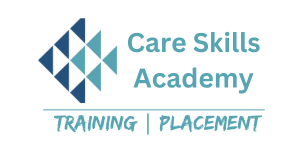With the growing use of electronics in everything from consumer gadgets to industrial equipment, PCB (Printed Circuit Board) repair has become a vital skill. A PCB Repairing Course offers hands-on training in diagnosing, troubleshooting, and repairing these crucial components, making it an excellent choice for those seeking a specialized, rewarding career in electronics. Let’s explore what this course entails and why it’s a valuable investment for aspiring technicians.
What is a PCB, and Why is Repairing It Important?
Printed Circuit Boards, or PCBs, are at the heart of virtually every electronic device. They serve as the framework for connecting electronic components like capacitors, resistors, and transistors, allowing the device to perform its functions. However, due to their intricate design and delicate parts, PCBs are prone to faults, including broken connections, damaged components, and short circuits. Skilled PCB repair technicians are essential for diagnosing and fixing these issues, extending the lifespan of devices and reducing electronic waste.
Course Outline: What You’ll Learn in a PCB Repairing Course
A comprehensive PCB Repairing Course covers both theoretical knowledge and practical skills. Here’s what you can expect:
- Introduction to PCB Design and Components: The course begins with an overview of PCB structure, including the roles of common components like resistors, capacitors, diodes, transistors, and integrated circuits (ICs). Understanding these parts is essential for effective troubleshooting and repair.
- Soldering and Desoldering Techniques: One of the fundamental skills in PCB repair is soldering, as it involves attaching and removing components on the board. Students practice with soldering irons, desoldering pumps, and hot air stations to master precise component handling without damaging the board.
- Diagnostic Tools and Techniques: Effective PCB repair requires using diagnostic tools such as multimeters, oscilloscopes, and logic analyzers. The course provides hands-on training in using these devices to identify faults like shorts, open circuits, and malfunctioning components.
- Component-Level Troubleshooting and Replacement: Learning to identify faulty components and replace them is a key part of the curriculum. This includes working with both through-hole and surface-mount components, ensuring students are prepared to handle a variety of PCBs.
- Printed Circuit Board Rework and Modification: In some cases, PCBs need adjustments, especially if new components are introduced or the board design requires minor modifications. Students learn rework techniques, such as bridging traces and reinforcing solder joints, to modify circuits as needed.
- PCB Testing and Quality Assurance: Before finalizing repairs, testing the board is crucial to ensure it functions correctly. The course covers methods for testing repaired PCBs, checking for continuity, verifying component functionality, and performing quality assurance to meet industry standards.
Career Opportunities in PCB Repair
Upon completing a PCB Repairing Course, graduates have access to various career paths, including:
- Electronics Repair Technician: Many technicians work with consumer electronics, diagnosing and repairing issues in devices like smartphones, laptops, and gaming consoles.
- Industrial Maintenance Technician: In manufacturing and industrial settings, PCBs are critical to machinery. Maintenance technicians work on site to repair or replace faulty boards, minimizing equipment downtime.
- Freelance PCB Specialist: For those who prefer independent work, freelancing offers flexibility in taking on PCB repair projects for local businesses or individual clients.
- Technical Support Specialist: Some roles require remote troubleshooting, where specialists help diagnose issues and recommend solutions to customers or field technicians.
Why Choose a PCB Repairing Course?
A PCB Repairing Course provides a highly sought-after skill set. With electronics becoming more complex and integrated into daily life, skilled PCB repair technicians are needed across industries. By completing this course, you’ll not only gain practical, job-ready skills but also earn a certification that demonstrates your expertise. Additionally, PCB repair contributes to sustainability by reducing electronic waste, a vital step toward a greener future.
Conclusion
Enrolling in a PCB Repairing Course is a strategic choice for those interested in electronics repair and technology. The skills acquired not only open doors to stable, in-demand careers but also help in building a deeper understanding of electronics. Whether you aim to become a repair technician or pursue a career in industrial maintenance, this course equips you with the knowledge and confidence to thrive in the world of electronics.
